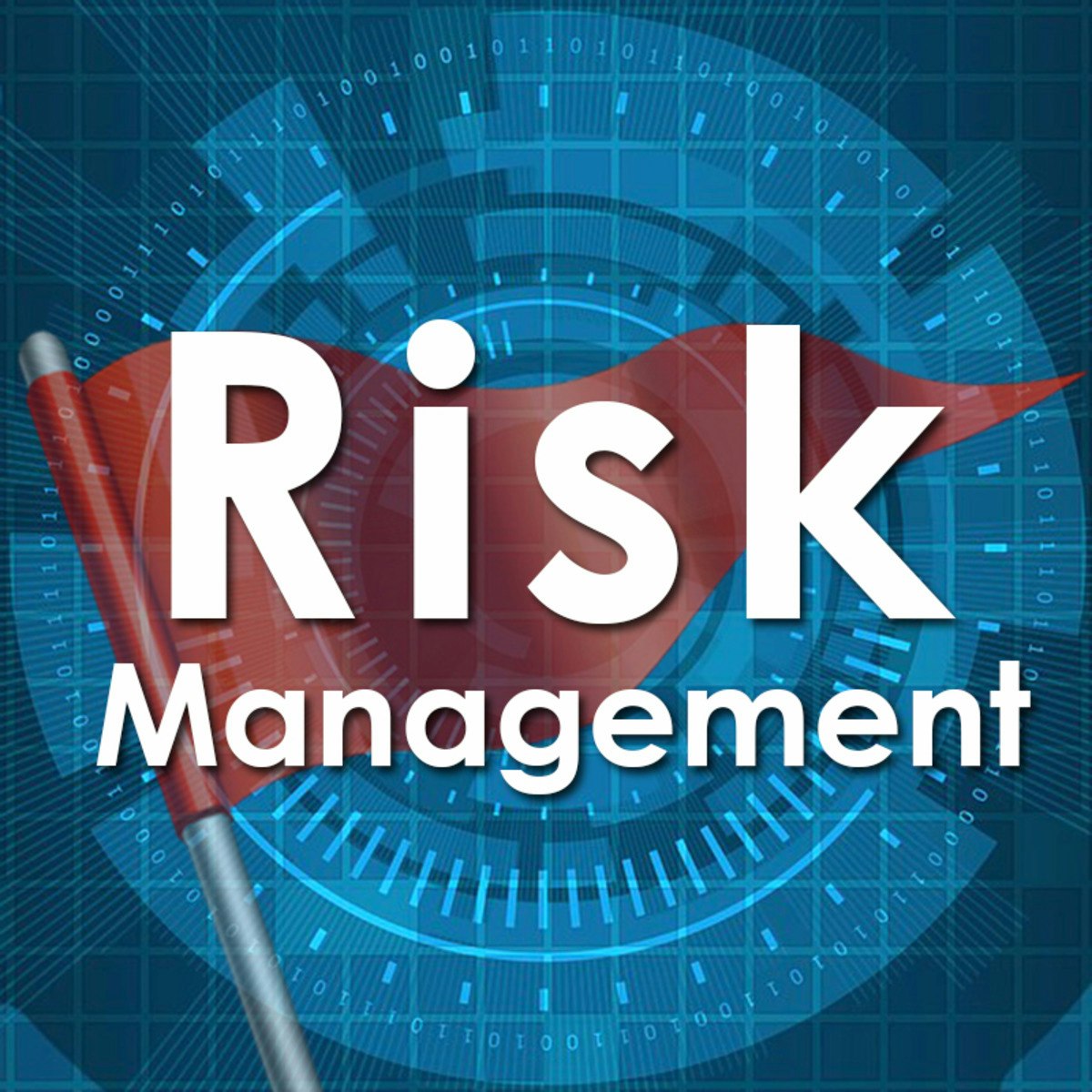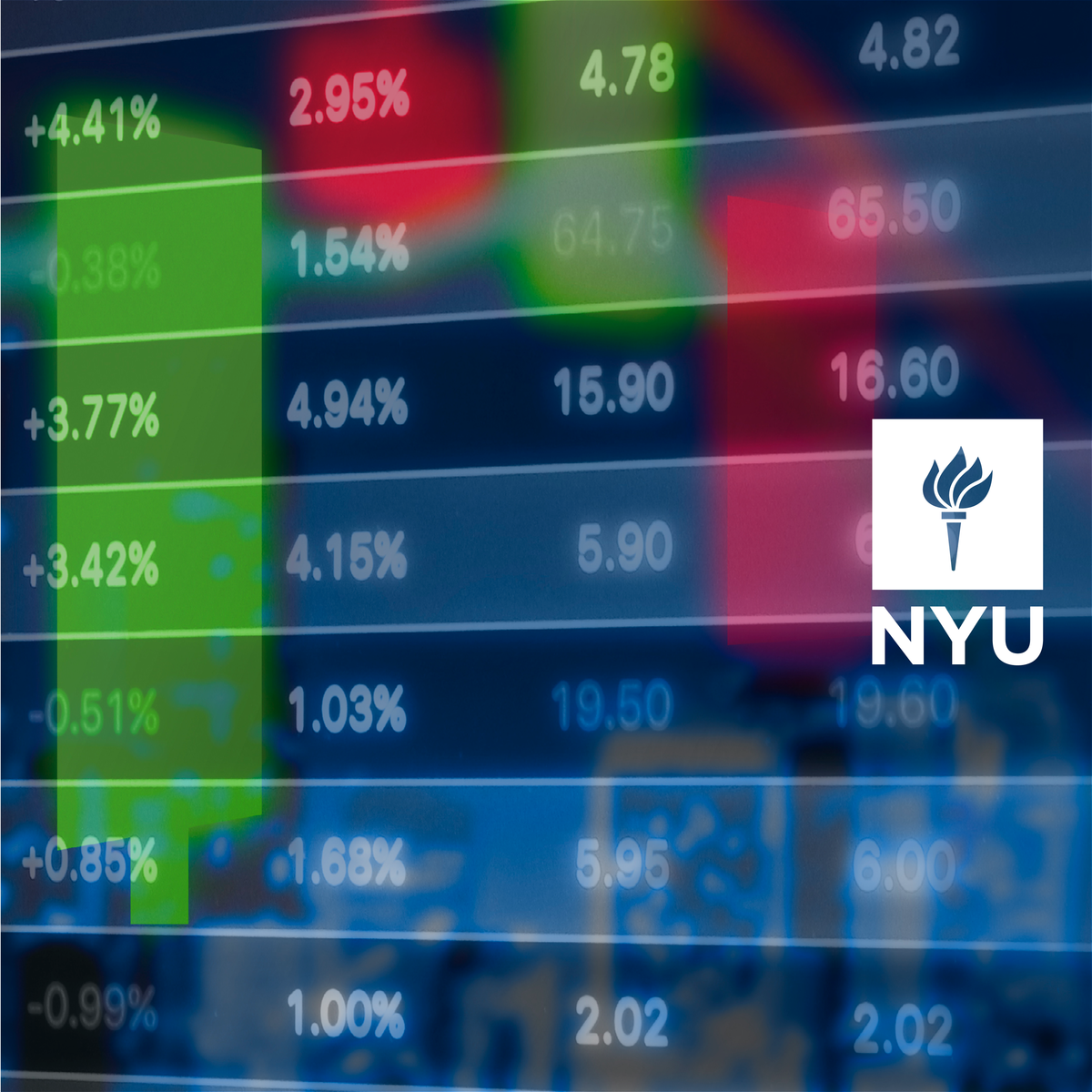Financial Risk Manager
vigating the Complex World of Financial Risk Management
A Financial Risk Manager (FRM) is a professional who identifies and analyzes threats to the assets, earning capacity, or success of an organization. They possess specialized knowledge in assessing various types of financial risks—such as market risk, credit risk, and operational risk—and develop strategies to mitigate these potential negative impacts. Think of them as the financial guardians of an organization, constantly scanning the horizon for potential storms and ensuring the ship is prepared to weather them.
The role of an FRM is both challenging and rewarding. It demands a keen analytical mind, a deep understanding of financial markets and instruments, and the ability to make critical decisions under pressure. For those who thrive on dissecting complex problems, forecasting potential outcomes, and developing sophisticated strategies, a career as an FRM can be incredibly engaging. The constant evolution of financial markets and the emergence of new risks, such as those related to climate change or cryptocurrencies, ensure that the work remains dynamic and intellectually stimulating.
Introduction to Financial Risk Manager
At its core, the purpose of a Financial Risk Manager is to protect an organization's financial health and stability. They achieve this by meticulously identifying potential financial pitfalls, assessing their likely impact, and implementing strategies to minimize or avoid these risks. This might involve anything from analyzing the creditworthiness of a potential borrower to modeling the impact of interest rate fluctuations on an investment portfolio. In essence, FRMs help organizations make more informed financial decisions by providing a clear understanding of the potential downsides.
Defining the Role: What Does a Financial Risk Manager Do?
A Financial Risk Manager (FRM) is a specialized professional tasked with identifying, analyzing, and mitigating the financial risks an organization faces. These risks can stem from various sources, including fluctuations in market prices (market risk), the possibility of a borrower defaulting on a loan (credit risk), or failures in internal processes or systems (operational risk). FRMs use their expertise to develop and implement strategies and policies aimed at reducing the organization's exposure to these financial threats.
Beyond just identifying and assessing risks, FRMs play a crucial role in guiding senior management on financial decisions and investments by providing valuable insights and recommendations. They collaborate extensively with other departments such as accounting, compliance, and legal to ensure the organization adheres to relevant regulations and industry best practices. In a world of increasing economic uncertainty, the role of the FRM in safeguarding a company's financial well-being is more critical than ever.
The work of an FRM is multifaceted. They are not only analysts but also strategists and communicators. They must be adept at interpreting complex data, building sophisticated risk models, and then clearly articulating their findings and recommendations to diverse audiences, from technical teams to executive leadership.
Where are Financial Risk Managers Needed? Key Industries and Sectors
Financial Risk Managers are indispensable across a wide array of industries, though they are most prominently found within the financial services sector. Major employers include commercial and investment banks, insurance companies, asset management firms, and hedge funds. Regulatory agencies also rely heavily on FRMs to help ensure the stability of the financial system.
However, the need for skilled risk management extends far beyond traditional finance. Any organization that faces financial uncertainty can benefit from the expertise of an FRM. This includes corporations in sectors like energy, technology, healthcare, and manufacturing, where factors like commodity price volatility, supply chain disruptions, or currency fluctuations can significantly impact financial performance. As businesses operate in an increasingly complex and interconnected global environment, the demand for professionals who can navigate financial risks is growing across diverse industries.
Consulting firms also employ FRMs to provide expert advice to a variety of clients on their risk management practices. Furthermore, with the rise of Fintech, there are emerging opportunities for FRMs in innovative companies developing new financial products and services.
Global Demand and Employment Outlook for FRMs
The demand for qualified Financial Risk Managers is strong globally and is projected to grow. According to the U.S. Bureau of Labor Statistics (BLS), employment of financial managers, a category that includes FRMs, is expected to grow significantly faster than the average for all occupations. The BLS specifically highlights risk management as a specialty within financial management that is anticipated to be in high demand. This growth is driven by several factors, including increasing regulatory scrutiny, the globalization of financial markets, and the growing complexity of financial instruments.
Events like the 2008 financial crisis underscored the critical importance of robust risk management, leading to a greater emphasis on this function within organizations. As companies continue to navigate an environment of economic uncertainty and evolving threats, the need for professionals who can identify, assess, and mitigate financial risks remains paramount. The Financial Risk Manager (FRM) certification, awarded by the Global Association of Risk Professionals (GARP), is globally recognized as the premier credential in this field, further enhancing the career prospects of certified individuals.
For individuals looking to build a strong foundation in finance, which is essential for an FRM, several online courses can provide the necessary knowledge. These courses cover fundamental financial concepts, market analysis, and investment principles.
To delve deeper into the world of finance and risk, these books offer valuable insights and foundational knowledge. They cover a range of topics from financial history to specific risk management techniques.
Key Responsibilities
The daily life of a Financial Risk Manager is centered around safeguarding an organization's financial health. This involves a continuous cycle of identifying potential threats, analyzing their likelihood and potential impact, and developing and implementing strategies to control or mitigate them. They are also responsible for ensuring the organization complies with a myriad of financial regulations and reporting requirements.
Identifying, Assessing, and Mitigating Risks
A core function of a Financial Risk Manager is the systematic identification, assessment, and mitigation of financial risks. This process begins with pinpointing potential threats to an organization's assets, earning capacity, or overall success. These risks can be diverse, ranging from market volatility and credit defaults to operational failures and even reputational damage.
Once identified, FRMs meticulously assess these risks, analyzing their potential financial impact and the likelihood of their occurrence. This often involves sophisticated quantitative techniques and financial modeling. Based on this assessment, they then develop and implement mitigation strategies. These strategies might include diversifying investments, hedging against currency fluctuations, purchasing insurance, or establishing more robust internal controls. The goal is always to reduce the organization's vulnerability to financial shocks and enhance its overall resilience.
Understanding risk assessment and mitigation requires a grasp of financial modeling and analysis. The following courses provide a good starting point for these skills.
These books offer comprehensive insights into risk management principles and practices, covering both theoretical foundations and practical applications.
Ensuring Compliance: Regulatory and Reporting Duties
Financial Risk Managers play a critical role in ensuring that their organizations adhere to a complex web of regulatory requirements and reporting obligations. This involves staying abreast of evolving financial regulations, such as Basel III for banks or Solvency II for insurers, and implementing policies and procedures to maintain compliance. They are often responsible for preparing and submitting detailed risk reports to regulatory bodies and internal stakeholders, including the board of directors.
This aspect of the role demands meticulous attention to detail and a thorough understanding of legal and regulatory frameworks. FRMs must ensure that the organization's risk-taking activities are transparent and fall within acceptable, legally defined boundaries. Failure to comply with these regulations can result in significant financial penalties and reputational damage, making this a high-stakes area of responsibility.
To understand the regulatory landscape, it's helpful to have a grounding in financial law and ethics. While specific regulatory courses are specialized, a general understanding of financial frameworks is beneficial.
Conducting Stress Tests and Scenario Analyses
Stress testing and scenario analysis are vital tools in the Financial Risk Manager's arsenal. Stress tests involve subjecting a company's portfolio or financial position to extreme, hypothetical market conditions to assess its resilience. For example, an FRM might model the impact of a sudden, sharp rise in interest rates or a significant downturn in a key market. Scenario analysis involves exploring the potential consequences of specific, plausible future events, such as a natural disaster or a major geopolitical incident.
These exercises help FRMs understand potential vulnerabilities and quantify the potential losses under adverse conditions. The insights gained from stress tests and scenario analyses inform the development of contingency plans and help organizations better prepare for unexpected shocks. This proactive approach to risk management is crucial for maintaining financial stability in a volatile world.
Developing skills in scenario analysis and stress testing often involves advanced financial modeling techniques. The following courses touch upon analytical methods relevant to these tasks.
Fostering Collaboration: Working with Cross-Functional Teams
Financial Risk Managers do not operate in a vacuum; effective risk management requires close collaboration with various teams across an organization. They frequently interact with finance departments to align risk strategies with overall financial planning, with compliance teams to ensure adherence to regulations, and with legal departments to address legal aspects of risk. They may also work with IT departments on issues of data security and operational resilience, and with business unit leaders to understand the specific risks inherent in their operations.
Strong communication and interpersonal skills are therefore essential for FRMs. They need to be able to explain complex risk concepts in an understandable way to non-specialists and build consensus around risk management strategies. This collaborative approach ensures that risk management is integrated into the organization's culture and decision-making processes.
Core Skills and Competencies
To excel as a Financial Risk Manager, a unique blend of analytical prowess, deep market knowledge, regulatory understanding, and strong interpersonal abilities is required. These professionals must be comfortable with numbers, adept at navigating complex financial landscapes, and capable of communicating critical information effectively.
Mastering Quantitative Analysis
Quantitative analysis is the bedrock of financial risk management. FRMs must be proficient in various statistical and mathematical techniques to measure and model risk. This includes methods like Value at Risk (VaR), which estimates the potential loss in value of a portfolio over a defined period for a given confidence interval. Another key technique is Monte Carlo simulations, which involve running thousands or even millions of hypothetical trials to assess the probability of different outcomes.
These quantitative skills allow FRMs to move beyond subjective assessments and provide data-driven insights into an organization's risk exposure. A strong foundation in mathematics, statistics, and econometrics is therefore highly valuable for aspiring FRMs. The ability to not only perform these analyses but also to interpret and communicate the results effectively is equally crucial.
For those looking to build or strengthen their quantitative analysis skills, several online courses offer comprehensive instruction in relevant mathematical and statistical methods. These courses can provide the foundational knowledge needed for advanced risk modeling techniques.
Foundational texts in quantitative finance and risk modeling can provide a deeper understanding of the theories and techniques used by FRMs.
Understanding Financial Instruments and Markets
A deep understanding of financial instruments and the workings of financial markets is paramount for a Financial Risk Manager. This includes familiarity with a wide range of assets, such as stocks, bonds, currencies, commodities, and complex derivatives like options, futures, and swaps. FRMs need to comprehend how these instruments are priced, how they trade, and the various risks associated with them.
Furthermore, FRMs must stay attuned to market dynamics, including factors that drive price movements, liquidity conditions, and interconnectivity between different markets. This knowledge is essential for accurately assessing market risk, developing effective hedging strategies, and anticipating how market events could impact their organization. Continuous learning is key, as financial markets are constantly evolving with new instruments and trading mechanisms.
Aspiring FRMs can gain essential knowledge of financial instruments and markets through dedicated online courses. These programs often cover the intricacies of various asset classes and market operations.
Navigating Regulatory Frameworks
Financial Risk Managers operate within a highly regulated environment and must possess a strong working knowledge of key regulatory frameworks. Prominent examples include Basel III, an international regulatory accord that sets standards for bank capital adequacy, stress testing, and liquidity risk, and Solvency II, a European Union directive that governs the capital requirements, risk management, and reporting for insurance companies.
Understanding these and other relevant regulations is crucial for ensuring an organization's compliance and for structuring risk management practices appropriately. FRMs must stay updated on changes to these frameworks, as regulatory landscapes are dynamic and can significantly impact how financial institutions manage their risks. This knowledge helps them guide their organizations in meeting regulatory expectations and avoiding costly penalties.
While specific regulatory frameworks are often learned on the job or through specialized professional development, foundational courses in finance and accounting can provide context for understanding these regulations.
Developing Essential Soft Skills
While quantitative and technical expertise is vital, Financial Risk Managers also rely heavily on a range of soft skills. Strong communication skills are paramount, as FRMs must clearly and concisely explain complex risk analyses and recommendations to diverse audiences, including senior management, board members, regulators, and colleagues in other departments. This often involves translating technical jargon into understandable business terms.
Decision-making under uncertainty is another critical soft skill. FRMs frequently operate in situations where information is incomplete or future outcomes are inherently unpredictable. They must be able to weigh evidence, assess probabilities, and make sound judgments, often under significant time pressure. Other important soft skills include problem-solving, critical thinking, attention to detail, and the ability to work effectively in a team.Developing strong communication and decision-making skills is often an experiential process, but courses focusing on business communication and strategic thinking can be beneficial supplements.
Formal Education Pathways
Embarking on a career as a Financial Risk Manager typically begins with a solid educational foundation. While specific requirements can vary, certain academic disciplines and advanced degrees are particularly relevant and can provide a strong springboard into this demanding field.
Relevant Undergraduate Degrees
A bachelor's degree is generally the minimum educational requirement for entry-level positions in financial risk management. Degrees in quantitative fields are highly favored. Common choices include Finance, which provides a broad understanding of financial markets, instruments, and theories. Economics offers insights into macroeconomic trends and market dynamics that influence financial risk.
A degree in Mathematics or Statistics equips individuals with the strong quantitative and analytical skills essential for risk modeling and data analysis. Other relevant undergraduate degrees might include Business Administration with a finance concentration, Actuarial Science, or even Engineering and Computer Science, especially if paired with a strong finance minor or relevant internships. The key is to build a solid foundation in quantitative methods and financial principles.
Online courses can supplement a formal degree or provide foundational knowledge for those considering a career change. Courses focusing on core mathematical and financial concepts are particularly useful.
These books can provide a solid understanding of financial principles and economic theories that are foundational to risk management.
Advancing with Graduate Programs
While a bachelor's degree can open doors to entry-level roles, many Financial Risk Managers pursue graduate studies to deepen their expertise and enhance their career prospects. A Master of Finance (MFin) or a Master of Science in Finance often includes specialized coursework in risk management, financial modeling, and quantitative methods. These programs provide a rigorous and focused education tailored to the financial industry.
An MBA (Master of Business Administration) with a concentration in Finance or Risk Management is another popular option. An MBA can provide a broader business perspective along with specialized financial knowledge, which can be advantageous for those aspiring to leadership roles. Other relevant master's degrees include those in Financial Engineering, Quantitative Finance, Economics, or Statistics. These advanced degrees often involve in-depth research and the application of sophisticated analytical tools.
For those considering or currently in graduate programs, specialized online courses can offer deeper dives into specific areas of financial risk or provide complementary skills.
Advanced texts on financial engineering and quantitative risk management are often central to graduate-level study in this field.
Exploring PhD Research Areas
For individuals inclined towards academia, research, or highly specialized quantitative roles, a PhD can be a viable path. Relevant PhD research areas in financial risk management are diverse and often at the cutting edge of the field. Quantitative risk modeling is a major focus, involving the development and refinement of mathematical and statistical models to measure and manage various types of financial risk. This could include work on advanced VaR models, stress testing methodologies, or credit risk modeling.
Behavioral finance is another growing research area, exploring how psychological biases and heuristics influence financial decision-making and market behavior, and how these factors contribute to risk. [2h8zvj] Other potential PhD topics include systemic risk, financial regulation, the impact of new technologies like AI on risk management, and the financial implications of climate change. A PhD typically involves rigorous theoretical work, empirical analysis, and the development of novel approaches to understanding and managing financial risk.Supplementing Education with Electives and Certifications
Beyond core degree requirements, aspiring FRMs can enhance their profiles by choosing relevant electives and pursuing professional certifications. Elective courses in areas like derivatives, fixed income securities, econometrics, programming (e.g., Python for finance, R), and machine learning can provide valuable specialized knowledge and technical skills. These can be particularly helpful in distinguishing a candidate in a competitive job market.
Professional certifications play a significant role in the financial risk management field. The most prominent is the Financial Risk Manager (FRM) certification offered by the Global Association of Risk Professionals (GARP). Other respected certifications include the Chartered Financial Analyst (CFA) and the Professional Risk Manager (PRM). These credentials demonstrate a high level of expertise and commitment to the profession, often leading to better career opportunities and higher earning potential.
Online platforms like OpenCourser offer a wide array of courses that can serve as valuable electives or help prepare for certification exams. You can browse finance and economics courses to find topics that align with your career goals.
Financial Risk Manager Certification
For professionals dedicated to the field of financial risk, obtaining a globally recognized certification can be a significant career differentiator. The Financial Risk Manager (FRM) designation, awarded by the Global Association of Risk Professionals (GARP), stands as the premier credential in this domain.
The Gold Standard: FRM Certification by GARP
The Financial Risk Manager (FRM) certification, administered by the Global Association of Risk Professionals (GARP), is globally recognized as the leading credential for financial risk professionals. Earning the FRM designation signifies a mastery of the knowledge and skills required to identify, measure, and manage risk effectively in the complex global financial landscape. It is highly valued by employers in banking, asset management, insurance, and regulatory bodies worldwide.
The FRM program provides a comprehensive understanding of risk management concepts and techniques. It covers a broad range of topics, including quantitative analysis, financial markets and products, and various risk models and valuation methods. Achieving FRM certification demonstrates a commitment to the highest standards of professional excellence in risk management.
Preparing for the FRM exam requires a dedicated study plan. While OpenCourser itself doesn't offer direct FRM exam prep courses, many foundational courses in finance and quantitative methods can build the necessary knowledge base. Consider exploring our extensive catalog by using the search feature on OpenCourser for relevant terms.
The official handbook from GARP is an indispensable resource for FRM candidates, providing comprehensive coverage of the exam topics.
Cracking the Code: Exam Structure, Prerequisites, and Pass Rates
The FRM exam is a two-part, multiple-choice examination designed to assess a candidate's ability to apply risk management tools and techniques. Part I typically covers the foundational tools and concepts of risk management, including quantitative analysis, fundamental risk management concepts, financial markets and products, and valuation and risk models. Part II delves deeper into the application of these tools, focusing on market risk, credit risk, operational and integrated risk management, risk management and investment management, and current issues in financial markets.
There are no specific educational or professional prerequisites to sit for the FRM exams. However, to be certified as an FRM, candidates must pass both Part I and Part II of the exam and demonstrate at least two years of full-time professional work experience in financial risk management or a related field. This work experience requirement ensures that certified FRMs possess not only theoretical knowledge but also practical application skills. Pass rates for the FRM exams are notoriously challenging, reflecting the rigor of the certification. Historically, pass rates have varied but often hover in the 40-60% range for each part, underscoring the dedication required to succeed.
For those preparing for the FRM or similar quantitative finance exams, strengthening mathematical and statistical foundations is key. Many online courses can help build these core competencies.
Staying Current: Continuing Education Requirements
Once an individual earns the FRM certification, the learning journey doesn't end. The Global Association of Risk Professionals (GARP) encourages FRM holders to participate in its Continuing Professional Development (CPD) program. While not always mandatory for maintaining the certification itself (policies can evolve, so it's best to check the official GARP website for the latest requirements), active participation in CPD is highly recommended to stay current with the rapidly evolving field of financial risk management.
The CPD program offers various ways for FRMs to maintain and enhance their knowledge and skills. This can include attending industry conferences, participating in webinars and online courses, reading relevant publications, and contributing to the profession through research or speaking engagements. Engaging in ongoing learning ensures that FRMs remain equipped with the latest tools, techniques, and regulatory insights to effectively manage risk in a dynamic global environment.
OpenCourser's vast library of courses can be an excellent resource for FRMs seeking to fulfill CPD requirements or simply to stay ahead of the curve. Explore new topics in Finance & Economics or delve into emerging areas like Artificial Intelligence and its applications in finance.
Comparing Credentials: FRM, CFA, and PRM
When considering professional certifications in finance, aspiring professionals often weigh the Financial Risk Manager (FRM), Chartered Financial Analyst (CFA), and Professional Risk Manager (PRM) designations. Each holds significant value but caters to slightly different career focuses.
The FRM, as discussed, is highly specialized in risk management, covering areas like market, credit, and operational risk in depth. It's ideal for those wanting to build a career specifically within risk functions in banks, investment firms, or regulatory bodies.
The CFA designation has a broader scope, focusing primarily on investment management. Its curriculum covers financial analysis, portfolio management, economics, corporate finance, equities, bonds, and derivatives. While it does touch on risk management, it's not as specialized in this area as the FRM. The CFA is often pursued by those aiming for roles like portfolio manager, research analyst, or investment strategist. Generally, the CFA is considered a more generalist finance credential.
The PRM, offered by the Professional Risk Managers' International Association (PRMIA), is another risk-focused certification. Its curriculum shares similarities with the FRM, covering financial theory, financial instruments, mathematical foundations of risk measurement, and risk management practices. While both FRM and PRM are respected, the FRM currently has greater market penetration and global recognition. Some perceive the FRM's curriculum to be more dynamic and quantitatively demanding in recent years. The PRM designation is often considered a strong alternative for those specifically targeting risk management roles, particularly if certain aspects of its curriculum or structure are preferred.
Ultimately, the choice between these certifications depends on an individual's specific career aspirations. If the goal is a deep specialization in financial risk management, the FRM is often the preferred choice. For a broader career in investment management, the CFA is typically more suitable. The PRM offers another strong option for risk specialization. Some professionals even choose to pursue multiple certifications, such as both the CFA and FRM, to demonstrate a comprehensive skill set.
For individuals exploring these different certification paths, foundational courses in finance, investment, and quantitative methods available on OpenCourser can provide valuable preparation and insight into the topics covered.
Career Progression and Opportunities
A career as a Financial Risk Manager offers a structured progression path with diverse opportunities across various industries. From entry-level analytical roles to senior leadership positions, FRMs can build impactful careers by leveraging their specialized skills and experience.
Starting the Journey: Entry-Level Roles
The path to becoming a Financial Risk Manager often begins with entry-level positions that provide foundational experience in risk analysis and financial markets. Common starting roles include Risk Analyst, where individuals are responsible for collecting and analyzing data to identify potential risks, monitoring risk exposure, and supporting senior risk managers. In this role, you might focus on specific types of risk, such as credit risk, market risk, or operational risk.
Another frequent entry point is the role of Quantitative Analyst (often called a "quant"). Quants apply mathematical and statistical models to financial data to develop and validate risk models, price complex financial instruments, and support trading decisions. Other related entry-level positions could include Credit Analyst, Compliance Analyst, or Junior Trader, all of which can provide valuable experience relevant to a risk management career. These roles typically require a strong analytical aptitude, attention to detail, and a solid understanding of financial principles.
For those aiming for entry-level roles, building strong analytical and quantitative skills is crucial. Online courses in data analysis, statistics, and financial modeling can be highly beneficial.
Advancing in Mid-Career: Pivots and Specializations
As Financial Risk Managers gain experience and expertise, typically after five to ten years in the field, a variety of mid-career opportunities open up. Many advance to roles such as Senior Risk Manager or Risk Manager, taking on greater responsibility for developing and implementing risk management strategies, leading teams of analysts, and advising senior management on risk-related matters.
Mid-career can also be a time for specialization or pivoting. An FRM might choose to focus deeply on a specific area like credit risk management, market risk modeling, or operational risk frameworks. Alternatively, some FRMs leverage their strong analytical skills and market knowledge to transition into related fields such as Portfolio Manager, where they are responsible for making investment decisions and managing investment portfolios while considering risk-return tradeoffs. Other potential mid-career moves could include roles in treasury management, financial consulting, or regulatory compliance. The FRM certification and the skills acquired are highly transferable across different financial functions.
Mid-career professionals can benefit from advanced online courses to deepen their expertise in specialized risk areas or to acquire new skills for a career pivot. OpenCourser's Professional Development category lists many relevant options.
These books delve into more specialized areas of risk management and financial strategy, suitable for those looking to deepen their expertise.
Reaching the Top: Leadership Pathways
With significant experience, a proven track record, and strong leadership qualities, Financial Risk Managers can ascend to executive-level positions. A common top-tier role is the Chief Risk Officer (CRO). The CRO is a C-suite executive responsible for the overall governance and strategy of risk management within an organization. They oversee all aspects of risk, establish the organization's risk appetite, and report directly to the CEO and the board of directors.
Other leadership pathways can include becoming the Head of Risk for a specific division or region, or taking on senior roles in areas like compliance, audit, or treasury. Some experienced FRMs also transition into senior consulting roles, advising multiple organizations on their risk management practices, or they may move into regulatory bodies in influential positions. The journey to these leadership roles typically requires a decade or more of experience, a deep understanding of the business, and exceptional strategic thinking and communication skills.
Hotbeds of Opportunity: Industries with High FRM Demand
The demand for Financial Risk Managers is particularly strong in several key industries. Banking, including commercial banks, investment banks, and savings institutions, is a primary employer of FRMs. These institutions face a multitude of risks, from credit and market risk to liquidity and operational risk, necessitating robust risk management frameworks.
Asset management firms and hedge funds also heavily rely on FRMs to manage the risks associated with their investment portfolios and strategies. The insurance industry employs FRMs to manage underwriting risk, investment risk, and catastrophe risk. Increasingly, the burgeoning Fintech sector presents exciting opportunities for FRMs, as innovative financial technology companies require expertise in managing novel risks associated with new products, services, and business models. Regulatory bodies and consulting firms also offer significant employment avenues for FRMs.Those interested in specific industries can find tailored courses on OpenCourser. For example, individuals looking at banking might explore courses on financial markets and institutions, while those interested in investment management could focus on portfolio theory and asset allocation.
Financial Risk Manager in Industry Applications
The principles of financial risk management are applied differently across various sectors, each with its unique challenges and priorities. From the intricate credit and liquidity concerns in banking to the complex market and portfolio risks in investment firms, and the specialized underwriting and catastrophe risks in insurance, FRMs tailor their expertise to specific industry needs. Moreover, new frontiers like climate and crypto-asset risk are creating fresh challenges and opportunities.
Guarding the Vault: Risk Management in Banking
In the banking sector, Financial Risk Managers are crucial for maintaining stability and regulatory compliance. A primary focus is credit risk, which is the risk that borrowers or counterparties will default on their obligations. FRMs in banking develop and implement models to assess borrower creditworthiness, set lending limits, and manage loan portfolio concentrations. They analyze factors like collateral, financial ratios, and economic conditions to make informed lending decisions.
Another critical area is liquidity risk management, which concerns a bank's ability to meet its short-term financial obligations without incurring unacceptable losses. FRMs monitor funding sources, forecast cash flows, and conduct stress tests to ensure the bank has sufficient liquid assets to withstand market disruptions or unexpected withdrawals. They also manage interest rate risk, operational risk within banking processes, and ensure compliance with regulations like Basel III.
Online courses focusing on banking operations, credit analysis, and financial modeling can provide valuable knowledge for those interested in banking-specific risk roles.
Books on banking regulation and credit risk are essential reading for FRMs in the banking industry.
Navigating the Markets: Risk in Investment Firms
For investment firms, including asset managers and hedge funds, Financial Risk Managers concentrate on market risk and portfolio hedging. Market risk arises from adverse movements in market prices, such as stock prices, interest rates, exchange rates, or commodity prices, which can impact the value of investment portfolios. FRMs employ various techniques, including VaR models and scenario analysis, to measure and monitor market risk exposures.
Portfolio hedging is a key strategy used to mitigate these risks. This involves taking offsetting positions in related financial instruments to reduce the potential losses from unfavorable market movements. For example, an FRM might use options or futures contracts to hedge against a potential decline in equity prices or currency fluctuations. They also play a role in ensuring that investment strategies align with the firm's risk appetite and regulatory requirements, and in managing liquidity risk associated with the firm's holdings.Courses on investment management, derivatives, and portfolio theory are highly relevant for FRMs in investment firms. These can be found by exploring Investment Management courses on OpenCourser.
Underwriting and Catastrophes: Risk in the Insurance Sector
In the insurance industry, Financial Risk Managers deal with unique types of risk, prominently underwriting risk and catastrophe modeling. Underwriting risk is the risk that the premiums collected will be insufficient to cover the claims and expenses incurred. FRMs in insurance help develop underwriting guidelines, price insurance policies appropriately based on assessed risks, and manage the overall risk profile of the insurance portfolio.
Catastrophe modeling is a specialized area focused on assessing the potential losses from large-scale, infrequent events like hurricanes, earthquakes, floods, and other natural or man-made disasters. FRMs use complex computer models that simulate these events to estimate potential financial impacts and inform decisions about reinsurance, capital adequacy, and pricing for catastrophe-exposed policies. They also manage investment risks associated with the insurer's asset portfolio and ensure compliance with regulations like Solvency II.For those interested in insurance risk, courses covering actuarial science, probability, and specialized insurance topics can be beneficial. While highly specialized, foundational courses in statistics and modeling are a good start.
The New Frontier: Emerging Areas of Risk
The landscape of financial risk is constantly evolving, with new challenges and opportunities emerging. Climate risk is a growing concern, encompassing both the physical risks associated with climate change (e.g., damage from extreme weather events) and the transition risks associated with shifting to a lower-carbon economy (e.g., policy changes, technological disruptions). FRMs are increasingly tasked with assessing and managing these climate-related financial risks for their organizations.
Another significant emerging area is crypto-asset risk. The rapid growth and volatility of cryptocurrencies and other digital assets present unique challenges for risk management. FRMs in firms dealing with or exposed to crypto-assets must develop new frameworks to assess risks related to price volatility, cybersecurity, regulatory uncertainty, and operational issues specific to these novel assets. Staying ahead of these and other emerging risks requires continuous learning and adaptation from financial risk professionals.
As these are emerging fields, dedicated courses are still developing. However, broader courses on environmental science, sustainability, and technology can provide context. For crypto-assets, understanding Blockchain technology is a good starting point.
Challenges and Ethical Considerations
The role of a Financial Risk Manager is not without its complexities and ethical quandaries. Balancing the pursuit of profit with prudent risk-taking, navigating moral dilemmas in reporting, and addressing systemic vulnerabilities are ongoing challenges. The ever-present threats of cybersecurity and operational disruptions also demand constant vigilance.
The Tightrope Walk: Profitability vs. Risk Aversion
One of the fundamental challenges for a Financial Risk Manager is striking the right balance between an organization's pursuit of profitability and the need for prudent risk aversion. Taking on some level of risk is often necessary for growth and generating returns. However, excessive risk-taking can lead to catastrophic losses and jeopardize the organization's stability.
FRMs must help their organizations define an appropriate "risk appetite"—the level and type of risk they are willing to accept in pursuit of their strategic objectives. This involves a nuanced understanding of the business, its financial capacity, and the potential rewards and downsides of various risk exposures. It's a continuous balancing act, requiring careful analysis, sound judgment, and effective communication with senior leadership to ensure that risk-taking is aligned with the organization's overall strategy and tolerance.
Navigating Moral Mazes: Ethical Dilemmas in Risk Reporting
Financial Risk Managers may encounter ethical dilemmas, particularly in the context of risk reporting. There can be pressure, whether implicit or explicit, to downplay certain risks or present a more favorable picture than reality warrants, especially if unvarnished truth might negatively impact bonuses, stock prices, or stakeholder confidence.
Maintaining objectivity and integrity in risk reporting is paramount. FRMs have a professional responsibility to provide accurate, transparent, and comprehensive information about an organization's risk exposures, even when that information is unwelcome. This requires courage, a strong ethical compass, and often, the ability to articulate difficult truths effectively to senior management and the board. Professional codes of conduct, like those associated with the FRM certification, provide guidance on navigating these ethical challenges.
Courses in business ethics and corporate governance can help professionals develop a framework for addressing ethical dilemmas in the workplace. OpenCourser offers resources in its Professional Development section.
Learning from the Past: Systemic Risks and Crisis Lessons
Financial history is punctuated by crises, such as the global financial crisis of 2008, which highlighted the dangers of systemic risk—the risk that the failure of one financial institution could trigger a cascade of failures throughout the entire system. Understanding the causes and consequences of past financial crises is a critical learning experience for FRMs.
Lessons from these events inform current risk management practices, regulatory frameworks (like increased capital requirements and stress testing), and the ongoing efforts to identify and mitigate systemic vulnerabilities. FRMs must consider not only the idiosyncratic risks specific to their own organization but also how their institution might be affected by, or contribute to, broader systemic risks. This requires a macroeconomic perspective and an awareness of the interconnectedness of the financial system.
Understanding past financial crises provides invaluable context for risk managers. This course offers an in-depth look at one of the most significant recent events.
Several acclaimed books offer detailed analyses of financial crises and the concept of systemic risk.
The Digital Battlefield: Cybersecurity and Operational Risk
In today's increasingly digital world, cybersecurity risk has become a major concern for financial institutions. The potential for data breaches, system disruptions, and financial theft due to cyberattacks poses a significant threat. FRMs, often in collaboration with IT and security teams, must assess these vulnerabilities, implement robust security measures, and develop incident response plans.
More broadly, operational risk—the risk of loss resulting from inadequate or failed internal processes, people, and systems, or from external events—is a constant challenge. This can include everything from fraud and human error to technology failures and legal risks. FRMs work to identify, assess, and mitigate these operational risks through improved controls, process enhancements, and business continuity planning. The interconnectedness of financial systems means that an operational failure at one institution can sometimes have wider repercussions.
For professionals looking to understand the intersection of technology and risk, courses in cybersecurity and IT governance can be very insightful. You can explore relevant courses in the Information Security and Cybersecurity categories on OpenCourser.
Future Trends and Technological Impact
The field of financial risk management is continuously evolving, driven by technological advancements and shifting global priorities. Artificial intelligence and machine learning are transforming predictive modeling, while ESG considerations and RegTech innovations are reshaping how risk is assessed and managed. These trends are also influencing the skills and roles required of FRMs.
The Rise of Intelligent Machines: AI/ML in Predictive Risk Modeling
Artificial Intelligence (AI) and Machine Learning (ML) are rapidly transforming financial risk management, particularly in the realm of predictive risk modeling. These technologies can analyze vast amounts of structured and unstructured data at speeds far exceeding human capabilities, identifying complex patterns and correlations that traditional models might miss. This allows for more accurate and timely risk assessments.
AI/ML algorithms are being used to enhance credit scoring models, improve fraud detection systems, forecast market volatility, and optimize trading strategies. For example, machine learning can help in building more robust models for predicting loan defaults or identifying subtle indicators of market stress. As these technologies mature, they are expected to become even more integral to the FRM's toolkit, enabling more sophisticated and proactive risk management.
Understanding the fundamentals of AI and machine learning is becoming increasingly important for FRMs. Online courses can provide a solid introduction to these transformative technologies.
These books explore the application of advanced technologies in finance and risk management.
A Greener Lens: ESG Integration and Sustainability Risks
Environmental, Social, and Governance (ESG) factors are increasingly being recognized as significant drivers of financial risk and opportunity. Financial Risk Managers are now tasked with integrating ESG considerations into their risk assessment frameworks. This involves evaluating how issues like climate change, resource scarcity, labor practices, data privacy, and corporate governance can impact an organization's financial performance and reputation.
Sustainability risks, particularly those related to climate change (both physical and transition risks), are gaining prominence. FRMs need to develop methodologies to quantify these risks, incorporate them into stress testing scenarios, and advise their organizations on mitigation and adaptation strategies. The integration of ESG and sustainability considerations represents a fundamental shift in how risk is perceived and managed, requiring FRMs to broaden their analytical perspectives.
Courses related to sustainable finance and corporate social responsibility can help FRMs understand and address ESG risks. Explore options in Sustainability and Environmental Sciences on OpenCourser.
The Tech-Driven Regulator: RegTech Advancements
Regulatory Technology, or RegTech, refers to the use of technology, particularly AI, big data analytics, and cloud computing, to enhance regulatory compliance and reporting processes. RegTech solutions are helping financial institutions automate and streamline tasks such as regulatory monitoring, transaction surveillance, know-your-customer (KYC) checks, and the generation of regulatory reports.
For Financial Risk Managers, RegTech advancements offer the potential to improve the efficiency and accuracy of compliance-related activities, reduce manual effort, and provide more timely insights into regulatory risks. As regulatory requirements become more complex and data-intensive, RegTech tools are becoming increasingly valuable in helping organizations meet their obligations effectively and proactively manage compliance risks.
While specific RegTech courses might be specialized, understanding the underlying technologies like AI and data analytics, which are covered in various Data Science courses, is beneficial.
The Evolving Role: Automation’s Impact on Traditional Risk Functions
Automation, driven by AI, ML, and other technological advancements, is reshaping traditional risk roles and functions. Routine tasks such as data collection, basic analysis, and report generation are increasingly being automated, freeing up Financial Risk Managers to focus on more strategic, value-added activities. This includes complex problem-solving, interpreting model outputs, developing innovative risk mitigation strategies, and communicating insights to senior management.
While automation may change the nature of some entry-level tasks, it is also creating demand for FRMs with new skill sets, particularly in data science, programming, and the ability to work effectively with advanced analytical tools. The FRM of the future will likely be more of a strategic advisor and a manager of sophisticated risk technologies, rather than solely a cruncher of numbers. Adaptability and a commitment to continuous learning will be key to thriving in this evolving landscape.
Frequently Asked Questions
Navigating the path to becoming a Financial Risk Manager and understanding the nuances of the role often brings up several common questions. Here, we address some of the most frequently asked questions to provide clearer insights for aspiring FRMs and those curious about the profession.
What is the typical salary range for Financial Risk Managers?
Salaries for Financial Risk Managers can vary significantly based on factors such as experience level, geographic location, industry, company size, and specific responsibilities. Entry-level positions, such as Risk Analyst, might start in the range of $50,000 to $80,000 annually in North America, excluding bonuses.
With several years of experience (e.g., 5+ years), FRMs can expect base salaries to rise, often ranging from $90,000 to $150,000 or more, with bonuses potentially adding a significant percentage on top. Senior Risk Managers and those in leadership roles like Chief Risk Officer can command substantially higher salaries, often exceeding $150,000 or $200,000, and potentially much more with extensive experience and responsibilities. According to some sources, the average annual pay for a Financial Risk Management professional in the United States is around $111,556 as of early 2025, though the range can be quite broad. Professionals holding the FRM designation may see salaries ranging from $55,000 to over $200,000 depending on their role and experience.
Is the FRM certification mandatory to work in financial risk management?
While the FRM certification is not always a mandatory requirement to secure an entry-level position in financial risk management, it is highly regarded and globally recognized as the premier credential in the field. Many employers prefer or even require the FRM designation for more senior roles, and it can significantly enhance job prospects, career advancement opportunities, and earning potential.
For those serious about a long-term career in financial risk management, pursuing the FRM certification is a valuable investment. It demonstrates a high level of specialized knowledge, a commitment to the profession, and an understanding of global best practices in risk management. Even if not strictly mandatory for an initial role, it can be a key differentiator in a competitive job market.
How does a Financial Risk Manager differ from an Actuary?
While both Financial Risk Managers and Actuaries deal with risk and uncertainty, their primary focus areas and typical industries differ. FRMs generally focus on a broad range of financial risks—including market, credit, operational, and liquidity risks—primarily within banking, investment firms, and corporate treasury functions. They use various financial models and analytical techniques to identify, measure, and mitigate these risks to protect an organization's financial stability.
Actuaries, on the other hand, traditionally focus on the financial impact of risk and uncertainty, particularly in the context of insurance, pensions, and employee benefits. They use statistical and mathematical models to assess the likelihood of future events, such as accidents, illnesses, or natural disasters, and to design and price insurance policies or pension plans accordingly. While there can be some overlap, especially in areas like enterprise risk management or within insurance companies, actuaries often have a more specialized focus on insurable risks and long-term liabilities, whereas FRMs deal with a wider spectrum of financial market and operational exposures.
Can Financial Risk Managers transition to executive leadership roles?
Yes, Financial Risk Managers can certainly transition to executive leadership roles. The skills and experience gained in risk management—such as strategic thinking, analytical problem-solving, decision-making under uncertainty, and a deep understanding of the business and its financial exposures—are highly valuable at the executive level.
A common executive path is to become a Chief Risk Officer (CRO), who is typically a C-suite executive responsible for overseeing the entire risk management function of an organization. Beyond the CRO role, experienced FRMs may also move into other senior leadership positions, such as Chief Financial Officer (CFO), Chief Operating Officer (COO), or even CEO, particularly in financial institutions or companies where risk management is a core strategic competency. The ability to navigate complex challenges and make sound judgments in high-stakes environments positions FRMs well for executive leadership.
Which industries hire the most Financial Risk Managers?
The financial services industry is the largest employer of Financial Risk Managers. This includes:
- Banks: Commercial banks, investment banks, and savings institutions heavily rely on FRMs to manage credit, market, liquidity, and operational risks.
- Asset Management Firms and Hedge Funds: These firms employ FRMs to manage portfolio risk, market risk, and develop hedging strategies.
- Insurance Companies: Insurers need FRMs for underwriting risk, investment risk management, and catastrophe modeling.
- Regulatory Agencies: Government bodies and financial regulators hire FRMs to help oversee the stability of the financial system.
- Consulting Firms: Major consulting firms employ FRMs to provide risk management advisory services to clients across various industries.
While these are the primary employers, the demand for risk management expertise is also growing in other sectors like energy, technology, and large corporations with significant financial exposures.
How has remote work affected opportunities for Financial Risk Managers?
The COVID-19 pandemic accelerated the adoption of remote and hybrid work models across many industries, including finance. While some aspects of financial risk management, particularly those involving highly sensitive data or close team collaboration on trading floors, may still require an in-office presence, many FRM roles have proven adaptable to remote work. Tasks such as data analysis, model development, report writing, and even virtual meetings with stakeholders can often be performed effectively from a remote location.
The increased acceptance of remote work may broaden geographic opportunities for FRMs, allowing them to access roles in different cities or even countries without needing to relocate. However, the extent of remote work availability can vary significantly by company culture, specific job requirements, and the evolving post-pandemic work landscape. Aspiring and current FRMs should research individual company policies and industry trends. For individuals seeking to enhance their skills for a distributed work environment, OpenCourser offers courses that can be taken from anywhere, helping to build a competitive profile regardless of location. You can explore our full catalog of courses to find options that fit your schedule and career goals.
Embarking on Your Journey
The path to becoming a Financial Risk Manager is one that demands dedication, continuous learning, and a proactive approach to skill development. It's a career that offers intellectual stimulation, significant responsibility, and the opportunity to make a tangible impact on an organization's success and stability.
If the challenges and rewards of navigating the complex world of financial risk resonate with you, the journey, while rigorous, can be exceptionally fulfilling. For those new to the field or considering a career pivot, remember that every expert was once a beginner. Building a strong foundational knowledge through education and targeted online courses, gaining practical experience, and pursuing relevant certifications like the FRM are key steps. The encouragement here is to start, to learn, and to persist. Even if the ultimate goal of a senior risk leadership role seems distant, each milestone achieved along the way builds valuable expertise and opens new doors. OpenCourser is here to support your learning journey, providing access to a wealth of knowledge to help you build the foundations for this demanding yet rewarding career.
This article aims to provide a comprehensive overview for those considering a career as a Financial Risk Manager. We encourage you to explore the referenced courses and books, and to continue your research on OpenCourser to find the resources that best suit your learning path.






































